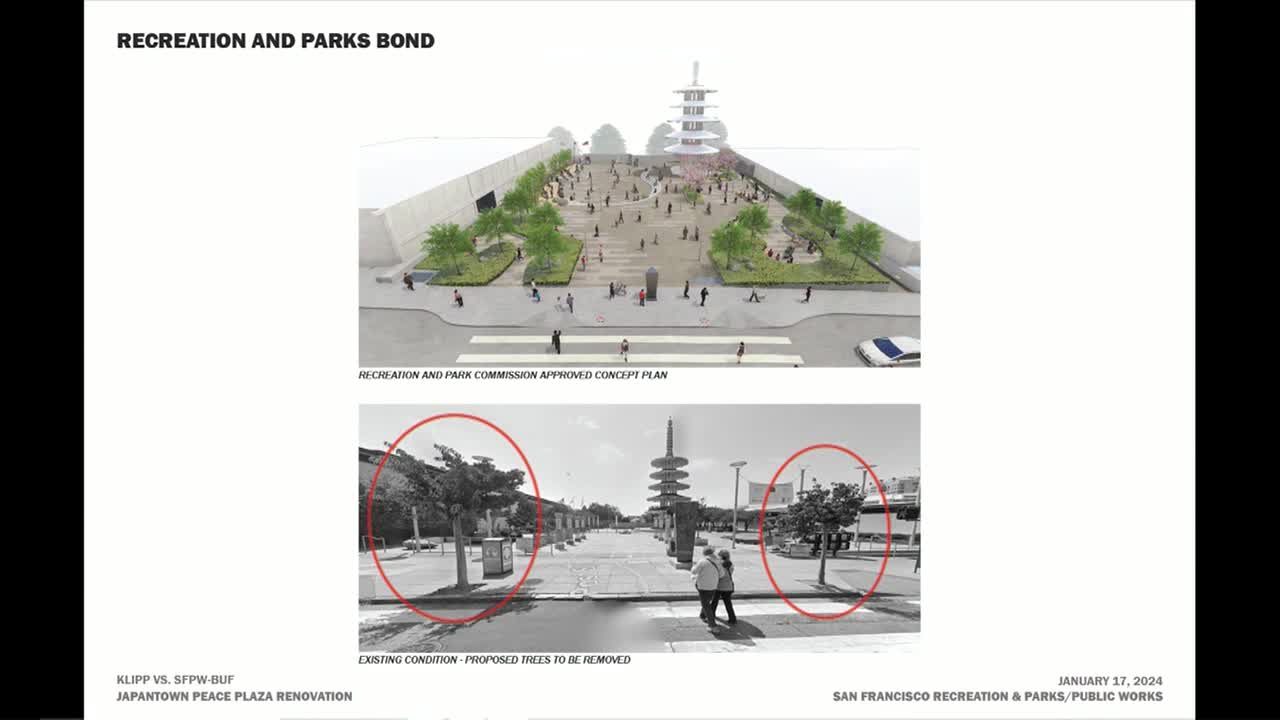Kevin Jensen presents updated San Francisco Vision 2039 plan for enhanced pedestrian safety
January 17, 2024 | San Francisco City, San Francisco County, California

This article was created by AI summarizing key points discussed. AI makes mistakes, so for full details and context, please refer to the video of the full meeting. Please report any errors so we can fix them. Report an error »

In a recent San Francisco city meeting, the focus turned to the ambitious 2039 Vision Plan, a blueprint aimed at enhancing urban safety and accessibility. Kevin Jensen, the city's ADA and disability access coordinator, presented critical insights into the plan, emphasizing the need for improved visibility in pedestrian areas to prevent accidents.
Jensen, who has dedicated over two decades to public works and has extensive experience in architecture, highlighted the importance of the Vision Zero initiative. This program aims to eliminate traffic-related fatalities and serious injuries by prioritizing safety in urban design. He explained that visibility between pedestrians and drivers is paramount, as it directly impacts reaction times and overall safety.
One of the key issues raised was the presence of trees and other visual obstructions that can hinder sightlines at intersections. Jensen pointed out that these elements contribute to "visual clutter," making it difficult for drivers and pedestrians to see each other. He argued that the design of urban spaces must account for human error, ensuring that safety measures are robust enough to protect all users, including those with disabilities.
The discussion also touched on the need for redundancy in traffic signals, as multiple lights can provide critical safety backups in case one fails or is obstructed. Jensen's insights underscored a shared responsibility for safety among pedestrians, drivers, and city planners alike.
As the meeting progressed, commissioners engaged with Jensen, seeking clarification on his points and exploring the implications of the Vision Plan for high-density areas with a history of traffic incidents. The conversation reflected a broader commitment to creating a safer, more inclusive urban environment for all San Francisco residents.
Jensen, who has dedicated over two decades to public works and has extensive experience in architecture, highlighted the importance of the Vision Zero initiative. This program aims to eliminate traffic-related fatalities and serious injuries by prioritizing safety in urban design. He explained that visibility between pedestrians and drivers is paramount, as it directly impacts reaction times and overall safety.
One of the key issues raised was the presence of trees and other visual obstructions that can hinder sightlines at intersections. Jensen pointed out that these elements contribute to "visual clutter," making it difficult for drivers and pedestrians to see each other. He argued that the design of urban spaces must account for human error, ensuring that safety measures are robust enough to protect all users, including those with disabilities.
The discussion also touched on the need for redundancy in traffic signals, as multiple lights can provide critical safety backups in case one fails or is obstructed. Jensen's insights underscored a shared responsibility for safety among pedestrians, drivers, and city planners alike.
As the meeting progressed, commissioners engaged with Jensen, seeking clarification on his points and exploring the implications of the Vision Plan for high-density areas with a history of traffic incidents. The conversation reflected a broader commitment to creating a safer, more inclusive urban environment for all San Francisco residents.
View full meeting
This article is based on a recent meeting—watch the full video and explore the complete transcript for deeper insights into the discussion.
View full meeting
